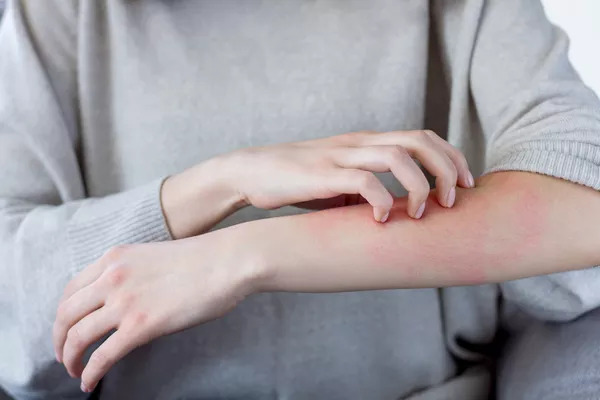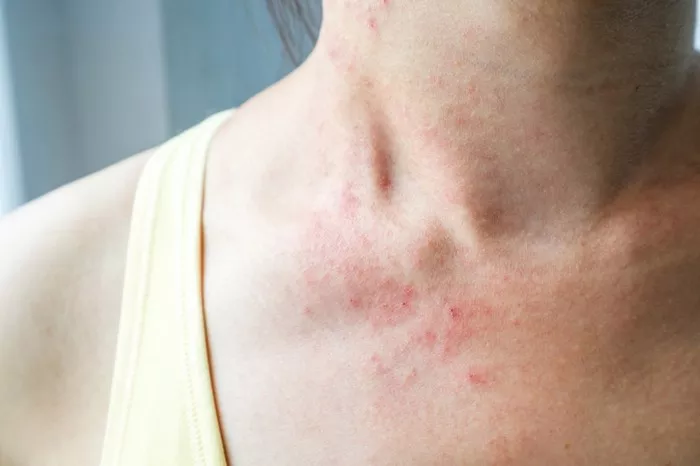Hives, also known as urticaria, are raised, itchy welts on the skin that can appear suddenly and cause significant discomfort. They can vary in size and may appear anywhere on the body, often as a reaction to allergens or other triggers. While hives are usually temporary and harmless, they can be bothersome and even alarming if severe. Knowing how to soothe hives effectively and understanding when to seek medical help is essential for managing this condition.
SEE ALSO: Can You Get Hives from Nerves?
Immediate Relief
Cool Compresses
One of the most effective ways to alleviate the discomfort of hives is by applying cool compresses to the affected areas. The cold helps reduce inflammation and numbs the area, providing instant relief from itching and burning sensations. To use a cool compress:
Soak a clean cloth in cold water.
Wring out the excess water and apply the cloth to the hives for 10-15 minutes.
Repeat as necessary throughout the day.
Alternatively, a cool shower can also help soothe the skin by reducing inflammation and providing overall relief from itching.
Antihistamines
Antihistamines are often the first line of defense against hives, as they work by blocking the release of histamine, a chemical in the body that triggers allergic reactions. Over-the-counter antihistamines like cetirizine, loratadine, or fexofenadine are particularly effective because they are non-drowsy and can provide long-lasting relief.
Cetirizine: Usually taken once daily, cetirizine can help reduce itching and the spread of hives.
Loratadine: Another non-drowsy option, loratadine is effective for treating allergy-related hives.
Shake the bottle well before use.
Apply a thin layer of calamine lotion to the hives using a cotton ball or pad.
Let it dry on the skin before covering the area with clothing.
Calamine lotion can be applied several times a day as needed.
Oatmeal Baths
Oatmeal is known for its soothing and anti-inflammatory properties, making it an excellent choice for relieving the itchiness and irritation caused by hives. An oatmeal bath can calm the skin and reduce the severity of the hives.
Add 1-2 cups of colloidal oatmeal to a lukewarm bath.
Soak in the bath for 15-20 minutes.
Gently pat your skin dry after the bath, avoiding vigorous rubbing.
Oatmeal baths can be particularly beneficial for widespread hives or if the itching is severe.
Common Triggers
Understanding what triggers your hives is crucial for preventing future outbreaks. Common triggers include:
Food Allergies: Common culprits include nuts, shellfish, eggs, and certain fruits.
Medications: Antibiotics, NSAIDs (like aspirin), and some blood pressure medications can trigger hives.
Insect Bites: Bites from bees, wasps, or other insects can cause localized hives.
Stress: Emotional stress is a significant trigger for many people with chronic hives.
When to Seek Medical
Severe Reactions
While most hives are mild and can be treated at home, some situations require immediate medical attention:
Difficulty Breathing: If you experience shortness of breath, wheezing, or a tightening of the throat, seek emergency medical care.
Swelling of the Face or Throat: This can indicate a severe allergic reaction known as anaphylaxis, which is life-threatening.
Non-Responsive Hives: If hives do not respond to over-the-counter treatments or persist for more than a few days, consult a doctor.
Underlying Conditions
In some cases, hives can be a symptom of a more serious underlying condition, such as an autoimmune disorder or a chronic infection. If your hives recur frequently or last for more than six weeks, known as chronic urticaria, it’s essential to see a healthcare provider for further evaluation.
Prevention Tips
Avoiding Triggers
Once you’ve identified your triggers, taking steps to avoid them is key to preventing future hives outbreaks. For example:
Food Allergies: Avoid known allergens and read food labels carefully.
Medications: Discuss alternatives with your doctor if a prescribed medication is triggering your hives.
Environmental Factors: Use air purifiers and keep windows closed during high pollen seasons.
Stress Management
Since stress is a common trigger for hives, incorporating stress management techniques into your daily routine can help reduce the likelihood of outbreaks. Consider practices such as:
Meditation and Deep Breathing: These techniques can help calm the mind and reduce stress.
Exercise: Regular physical activity can help manage stress and improve overall well-being.
Adequate Sleep: Ensure you get enough restful sleep each night to help your body cope with stress.
In conclusion, hives can be uncomfortable and sometimes alarming, but with the right approach, you can soothe your symptoms and prevent future outbreaks. Remember to identify and avoid triggers, use over-the-counter remedies as needed, and consult a healthcare provider if your symptoms are severe or persistent. By taking these steps, you can effectively manage hives and enjoy greater peace of mind.
Related Topics:

























